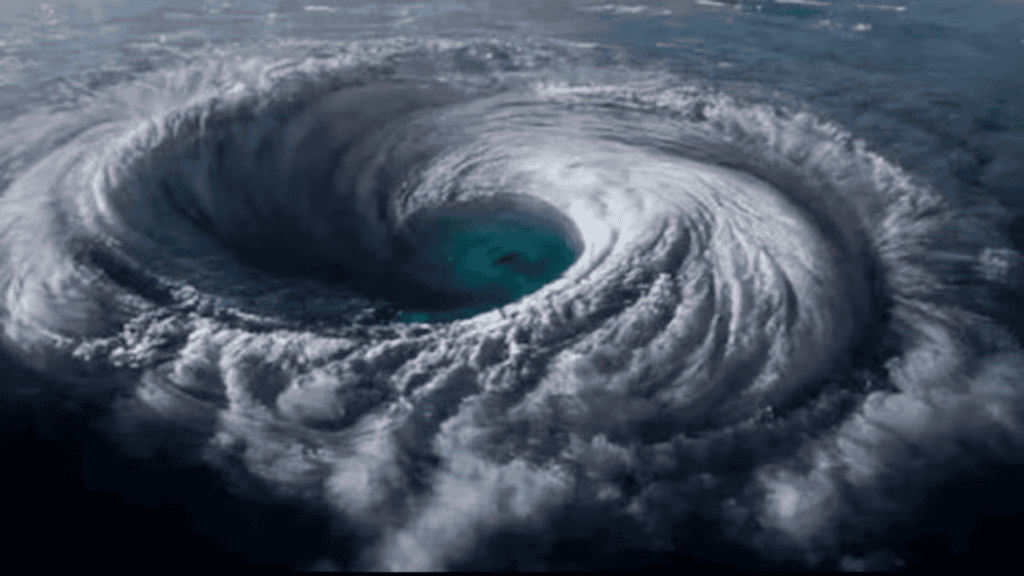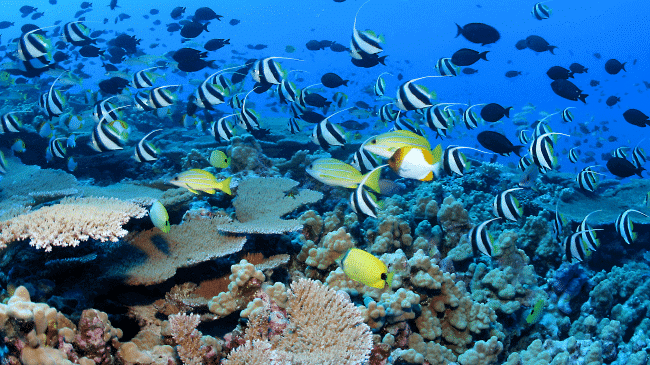Important Questions: Oceans and Continents | Social Studies for Class 6 PDF Download
Very Short Answer Type Questions
Q1: Which continent has the most land in the Northern Hemisphere? Which hemisphere has more water than land?
Ans: Asia has the most land in the Northern Hemisphere. The Southern Hemisphere contains more water than land.
Q2: What is a sea?
Ans: A sea is a smaller part of the ocean that is partially surrounded by land. It is like a little piece of the ocean that is close to the land.
Q3: Give an example of a mysterious creature living in the deep sea.
Ans: The Anglerfish is a fascinating and mysterious creature found in the deep sea.
Q4: What type of powerful storm can cause significant damage in coastal areas?
Ans: Cyclones are powerful storms that can cause significant damage in coastal areas.

Q5: What natural event is triggered by earthquakes or volcanic eruptions beneath the ocean?
Ans: A Tsunami is a natural disaster that occurs in the ocean.
Q6: What authority in India manages disaster situations like tsunamis?
Ans: National Disaster Management Authority
Q7: Where is freshwater mainly found?
Ans: Freshwater is found in glaciers, rivers, lakes, the atmosphere, and underground as groundwater.
Q8: Which two main island groups are part of India?
Ans: Andaman and Nicobar Islands, Lakshadweep Islands.
Q9: What is the name of India's first scientific base in Antarctica?
Ans: Dakshin Gangotri is India's first scientific base in Antarctica.
Q10: What date is recognised as World Oceans Day?
Ans: World Oceans Day is celebrated on June 8 each year.
Short Answer Type Questions
Q11: What is the difference between a bay and a gulf?
Ans: A bay is a broad area of the sea where land curves inward, while a gulf is a larger area of the sea that is also partially surrounded by land. Gulfs are usually bigger than bays.
Q12: What is marine flora, and can you name two examples? What do we call the animal life found in the ocean?
Ans: Marine flora is the plant life in the ocean. Two examples of marine flora are algae and seaweeds. The animal life in the ocean is called marine fauna. It includes many species like fish, dolphins, and whales.

Q13: What countries border the Indian Ocean? What are the two important parts of the Indian Ocean near India?
Ans: The Indian Ocean is bordered by Asia to the north, Africa to the west, and Australia to the east. It connects to the Southern Ocean to the south. The two important parts of the Indian Ocean near India are the Arabian Sea, which is to the west, and the Bay of Bengal, which is to the east.
Q14: What happened on December 26, 2004?
Ans: On December 26, 2004, a big tsunami hit many countries, including India. It was caused by an earthquake in the ocean. Many people, over 200,000, lost their lives, and places like the Andaman Islands were badly hurt.
Q15: What are clouds, and why are they important for rain?
Ans: Clouds are big white shapes in the sky. They are important because they hold water, and when they get heavy, they let the water fall down as rain. This rain helps plants grow and gives us water to drink.
Long Answer Type Questions
Q16: Explore how the uneven distribution of oceans and continents shapes Earth’s surface and climate.
Ans: The uneven distribution of oceans and continents shapes Earth’s surface and climate significantly.
- Oceans span nearly three-fourths of the planet, mostly in the Southern Hemisphere, while land, just over one-fourth, dominates the Northern Hemisphere, as seen in pole-centred maps.
- This affects climate: oceans send monsoon rains to India, vital for farming, visible as clouds from space.
- The Northern Hemisphere’s land, like Asia and North America, supports human life, while the Southern Hemisphere’s waters, such as the Southern Ocean, sustain marine life like whales.
- Storms and tsunamis, like the 2004 Indian Ocean event, also strike coastal climates, showing how this spread influences nature and people daily.
Q17: Discuss the role of oceans in sustaining life and influencing human culture, using examples.
Ans: Oceans play a vital role in sustaining life and shaping human culture in several ways:
- They host diverse marine life—algae, fish, dolphins, whales—and produce over half the world’s oxygen, called “the planet’s lungs.”
- They send rain to continents, like India’s monsoons from the Indian Ocean, keeping life alive.
- For humans, oceans have long enabled migration, trade, and fishing, shaping history.
- Coastal cultures craft tales of sea gods like Varuna, honoured in the Indian Navy’s motto, “Be auspicious to us, O Varuna.”
- Yet, cyclones also arise, linking nature’s gifts and risks to people’s lives.
- The five oceans—Pacific, Atlantic, Indian, Southern, and Arctic—flow as one, supporting this global role.
Q18: Explain the varying counts of continents and their significance.
Ans: The count of continents varies between four and seven, depending on how we define them. Here’s a breakdown:
- The common seven continents—Africa, Antarctica, Asia, Australia, Europe, North America, South America—are shown on the world map.
- North and South America can merge as “America,” making six, while Europe and Asia, one landmass, split culturally, though geologists say “Eurasia,” dropping to five.
- Africa-Eurasia could yield four.
- This matters: Asia’s huge size overshadows Australia’s, per the size diagram.
- The Olympic rings highlight five inhabited continents—Africa, America, Asia, Australia, and Europe—showing how these continents define our view of Earth’s geography and past.
Q19: Evaluate the environmental threats to oceans and the need for their protection.
Ans: Oceans are facing significant environmental threats due to human activities, making their protection essential.
- Oceans face dire environmental threats from human actions, making protection crucial.
- Plastic waste, dumped in millions of tonnes yearly, chokes marine life—fish, dolphins, whales—while overfishing cuts species in the Pacific, Atlantic, and Indian Oceans.
- These harms hit ecosystems that give over half our oxygen and send India’s monsoon rains.
- World Oceans Day (June 8) names them “lungs of our planet,” urging care.
- The 2004 tsunami’s toll on the Andamans reveals their power and fragility.
- Efforts like the Indian Ocean Tsunami Warning System, with India’s aid, safeguard lives and nature, ensuring oceans support climate and humanity ahead.
Q20: Explain the importance of islands and India’s presence in Antarctica.
Ans: Islands and India’s Antarctic presence hold significant value:
- Islands and India’s Antarctic presence hold unique value.
- Islands, surrounded by water, number in lakhs—Greenland, the largest, tops India’s 10 biggest states combined.
- India’s 1,300 islands include Andaman and Nicobar in the Bay of Bengal and Lakshadweep in the Arabian Sea, marked on India’s map.
- The 2004 tsunami struck the Andamans, showing their risks.
- In Antarctica, India’s program began in 1981, establishing Dakshin Gangotri in 1983, followed by two bases.
- About 40 teams have studied climate there, in a settlement with a library and post office, reflecting India’s reach to this icy, white expanse.
|
66 videos|344 docs|28 tests
|
FAQs on Important Questions: Oceans and Continents - Social Studies for Class 6
| 1. What are the major oceans and how do they differ from each other? |  |
| 2. How do continents differ from oceans in terms of geography? |  |
| 3. What are the main features of the Earth's continents? |  |
| 4. How many continents are there, and what are their names? |  |
| 5. Why is the study of oceans and continents important for understanding the Earth? |  |

















